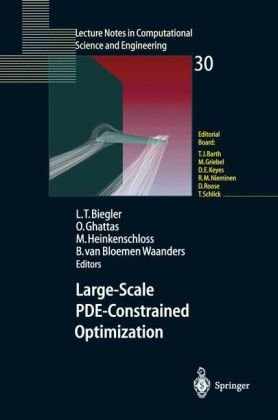 Genghis Khan
Genghis Khan
A striking feature of the Academic Physics Community is the failure to engage with its own diaspora. I left because I was completely bored with academic research. I had no shortage of new results, but the culture of physics research in those days was toxic.
Firstly, there were the infantile rejection letters and stupid priority fights. Secondly, there was the unashamed plagiarism, which I experienced first hand. Finally, there was the ignorant Sun King attitude of leading professors when you showed them something different that they did not already know.
Let them Eat Cake and Dine on Stringy Ectoplasm.
Not for any of these people a research path that may actually lead to success!
When you deal with that kind of nonsense at a formative age it kind of changes your view of the world. I made up my mind in 1995 that Academic Physics was certainly headed for a Titanic Fall from Grace. I just up and left in search of greener pastures.
However, now I can discern how that very fall might encompass a rise in the general level of research quality and a fuller public engagement for Physics – The Enterprise.
As I see it, the central issues to be addressed are these:
1) The Academic Physics Business Model is Busted
2) It is Illogical that The Physics Diaspora are effectively excluded from research
3) The push for New Physics is delusional with regard to the claimed social benefits
Let us take each of these in turn and then propose a partial remedy.
The Academic Business Model is Busted Since the 1950s and 1960s expansion there has been a near universal business model for the conduct of physics research. Outside of a handful of industrial labs such as Bell labs and IBM Research the bulk of physics research was academic and grant funded.
Success in this world required tenured status as a Professor followed by expansion of the venture through public grant moneys to hire and employ graduate students.
Result: a huge expansion in product, both research papers and PhDs.
Sometime around the 1980s and 1990s this business model began to break. It is no surprise why. It has the properties of a pyramid scheme.
To progress a career one needed to manufacture more PhDs. Very soon there is no room for all the PhDs and they get sent out into the big wide world. Nothing wrong with that! However, as the Professors who stay behind compete ever more furiously for grants they get more and more specialized.
Worse the product is research papers which can only be read by other specialists.
That is where we are now. Overly specialized PhDs who come out knowing a great deal about the abstruse and speculative elements of the research frontier. The vast bulk of what they know is not established in any way shape or form as Science. A great deal of it is Pure Junk and useless to society at large. Worse, the poor PhD never learned any of the eternally useful old-fashioned physics that describes how Nature actually works.
Result: a glut of hyper-arrogant know-nothing specialists in speculative souffle subjects. These people are useless to hire in any engineering enterprise and dangerous when set loose in financial markets. You give them a Vanilla Mortgage and they make a Constant Proportion Portfolio Insured Portfolio of Synthetic Collateralized Debt Obligations with a Neat Auto-Destruct feature when the capital buffer falls below 5%. Light fuse, RUN!
That is a thoroughly broken business model.
The Excluded Diaspora As anybody who did leave graduate school can attest, the attitude of the professors to those who leave is often rather arrogant. They look down on PhDs who entered commerce in search of a living as “not cut out for research.”
This is a stupid attitude. There are now far more physics PhDs outside of Academia than there are inside. The critical mass of brain power is not in the Ivory Tower.
It exists outside the Walls of the Citadel.
It is a Mongol Diaspora, happily living out on The Barbarian Steppes of Commerce.
Far more significantly, and against the professorial prejudice, the folks outside of the Academic environment are often among the more engaged, capable thinkers and creative problem solvers. They typically entered graduate school because they were gifted academically and chose physics since they liked to think about how things work. However, once exposed to the arrogance of professional research and the stupidity of its mores they simply left in search of a more stimulating and rewarding environment.
I know many many physics PhDs around the world who fit this description to a tee. Furthermore, since they were forced to make new careers in a host of different fields they are much more open minded about science than the typical academic. They actually have very fertile minds and great preparation for cross-disciplinary work.
This is where most scientific advances are made. However, Academics typically prefer to specialize. Once you are an established expert in a tiny area, cross-pollination is viewed as an existential threat.
The Push for New Physics is Delusional I myself am involved in a privately funded effort to develop a New Quantum Theory based upon the Barut Self-Field Quantum Electrodynamics. Therefore, this last point may seem a bit contradictory. How can you say New Physics is Delusional when you are pursuing exactly that?
The point I would like to make is that genuinely new physics generally springs from exposure to important problems. One of my associates and collaborators is involved in fracture mechanics. This is a key area of materials science and engineering. The other day he shared with me how old fashioned the models are. We agreed to work together on it. We saw a huge opportunity overlooked by the Academics.
The delusional element in the typical push for new physics from Academics is the idea that they will find it by pursuing a grant application. The risk calculus of research grant applications is that you should never ever write one unless you already know the answer to the problem being posed.
Ergo… they are a complete and total waste of money.
The best way to find new things is to be exposed to a rich array of hard problems that matter. Academics generally shun such dirty, messy real world problems because they mess up the grant application! The Research Hamster spins ever faster to make the stuff we already know less readable. Hell, Physics with Functors! Why Not?
I see this now with the on-going D-Wave quantum computing saga. In various of my own business interests I deal with solid commercially minded enterprises who are evaluating the technology.
About this development I have some bad news for the quantum computing zealots. The feedback I have is that this new architecture is well suited to complement more traditional processing for constraint problems.
The buyers of D-Wave computers (we are up to #4 now) do not give a Rat’s Arse what the dang thing is called. They do not fundamentally care if it is called a quantum computer or not.
Hell, you could have called it the Windows 666-Box and they still would have bought!
They just care about solving a commercial problem.
That is commerce 101. Meanwhile, back in Academic Zealot Land we have spent billions of public dollars to work out that $$15=3\times 5$$. You get the point. Superconducting electronics now has an emerging marketplace. Thanks to who?
Thanks to D-Wave.
The Mongol Horde – A Remedy Academic Physics has Jumped the Shark. It promised this World, a Teleportation Machine to New Worlds, and a whole new Parallel Universe of your own. In place of that we got:
Icky-Sticky Pea-Brained Stringy Ectoplasm and A Splendid Theory of Nothing.
The Citadel is now chock-full of Quantum Jumping Half-Crazed Lunatics.
The PhD trained physicists that I correspond with are all members of the Academic Diaspora. They all pretty much shake their heads in unison about how sad and twisted physics has become. Reading the headlines of the science reporting magazines is one long succession of Psychobabble, Fudge and Souffle.
I believe there is genuinely New Physics in the wings but I do not trust any Academic to find it. It would seem to me that they are diligently ignoring the specific evidence about where they should look for it.
Recognizing this fact, I think we can introduce a New Business Model for Physics.
This is an idea borrowed from an article published in the The Clute Institute Journal:
Big Physics At Small Places : The Mongol Horde Model Of Undergraduate Research
The central thrust of that experiment was to engage undergraduate students in a big physics project at the accelerator labs. Through bringing eager students into the process of detector design and development the researchers hoped to get more value for their grant dollar and also some able young minds on the job.
The most delightful idea in this paper lies embedded in the title: The Mongol Horde Model of Research. I love this idea so much I am going to run with it.
However, I aim for a much more ambitious experiment. Given the earlier work I did in nonlinear field theory I think it is feasible to build a New Quantum Theory. I am going to release my own bottom drawer research as start-up capital to seed this project.
The Mongol Kernel Fork of the New Physics will be hosted at www.MongolPhysics.com
There is plenty of work to be done, so I am happy to crowd source the parts that I am missing. The product will, of course, be modified equations, but much more importantly it will be software that implements them. The focus will not be the Delusional Dance of New Physics but the practical commercial goal of Non-Perturbative QED.
We will see if the Mongol Horde can accomplish what the High Priests could not.
A Genuine Theory of Something.

